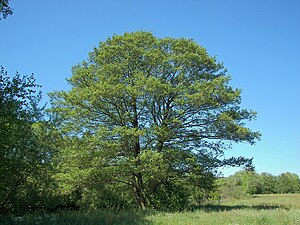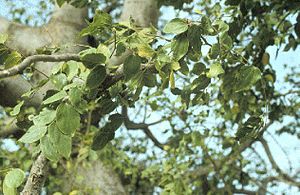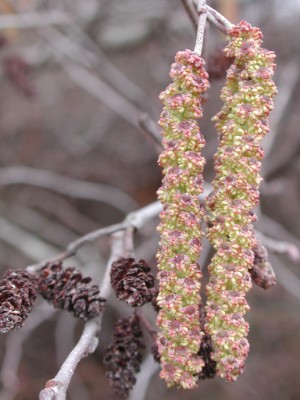This is the time of year when I love to get outside and wander around in forests. The humidity has dropped as well as the temperatures, so you can walk the forest floor admiring the trees that you pass, without fear of getting heat stroke or melting into a puddle.
CLC Tree Services has taken you on a walk or two before. Would you care to join us for another tour about the woods of Ontario to see if we can find some new trees to appreciate? I promise you a new species or two of Ontario trees to discover!
A LOOK AT SOME ONTARIO TREES
ON A WOODLAND WALK

Alder
While this usually small tree is related to the birch family, the ALNUS has a genus all its own. Alder trees are deciduous and easy to identify due to their catkins. While there are some differences in leaf shape amongst species, in general they are alternate, simple and serrated. Alders tend to like wet areas and can often be found near stream and river banks.
Now once you have identified an alder, is there anything that you can do with them? Well, electric guitar makers think so, as Fender Stratocasters and Telecasters are made from them. The hardwood is also useful in furniture and cabinet making. Plus, you can eat the catkins of some species if you are in survival mode, although they have a bitter taste. The wood is a better alternate for smoking yourself a nice salmon dinner, if you have a mind to.
Hackberry

From the genus CELTIS, the Hackberry tree is the next one I spy. This tree has an interesting history, as it used to belong to the Elm family, but is now identified in the Cannabaceae family (hemp). It has rough, bumpy bark and it too is tolerant of moist growing conditions. That being said, it is a hardy tree and can be found in a variety of soil and sun locations, making it a good choice for urban planting.
Unless you are a butterfly and inclined to eat it, hackberries don’t have a ton of common uses. The leaves are alternate, pointed and simple, with edible berries on some species . Those berries mostly get devoured by birds though, which I’m sure you would be keenly aware of if you have one on your property (and admire the stains that they leave behind every fall). While hackberries are sometimes used in cabinetry and woodworking, when light-coloured wood is desired, the wood is quite soft and has a propensity to rot quickly. Your best bet with this medium-sized tree is to admire it as it grows.
Serviceberry
It would seem that berry trees are rampant today, as when I move along I see an AMELANCHIER, otherwise known as a Serviceberry tree. To be fair, this species is so varied that you might find low-growing or clump-forming shrubs, up to small trees within its ranks. What is common among the serviceberry genus is that the leaves are deciduous, alternate, oval-shaped and pointed at the tip. They also offer a brilliant floral display in the early spring in your yard or on the edge of the forest in the wild. What is better than that is their edible berries that are friendly for bird, deer, insects and humans alike (depending upon the species – always confirm identification before eating any wild plants!). If you do happen to confirm that you have an edible serviceberry on your hands, you are in luck, as you can make pies, jams or even pemmican (Native American food made from dried meat, fat and fruit) out of them! That is if you get them before the wildlife does.

Once you have had your fill, let’s keep walking and see what else is around. Now what do we have here? This tree might invoke images of bubbling cauldrons and gnarly old women stirring at them with a pocket of frog legs and a pinch or two of eye of newt to toss in, but HAMAMELIS, otherwise known as Witch Hazel, is a deciduous shrub that deserves a little more respect than that.
Witch Hazel
While witch hazel might have been used to make a broom or two back in the day, its other uses continue into the present. You can use it as an astringent to help fight acne, eczema, psoriasis, poison ivy and even insect bites. Folks suffering from hemorrhoids or varicose veins might also want to look into this handy tree. To identify one, look for oval, alternate leaves on a small tree or shrub. The flowers bloom at the same time as the previous year’s fruit ripens, during late fall or early winter. It makes for a pretty addition to moist, but well-drained soils. While it prefers shade, witch hazels do tolerate some sunshine. With all that it is good for, perhaps you might want to plant one on your property?
I think I have stretched my legs enough for today. Thanks for joining us on another walk in the woods. Come back and join us again!





